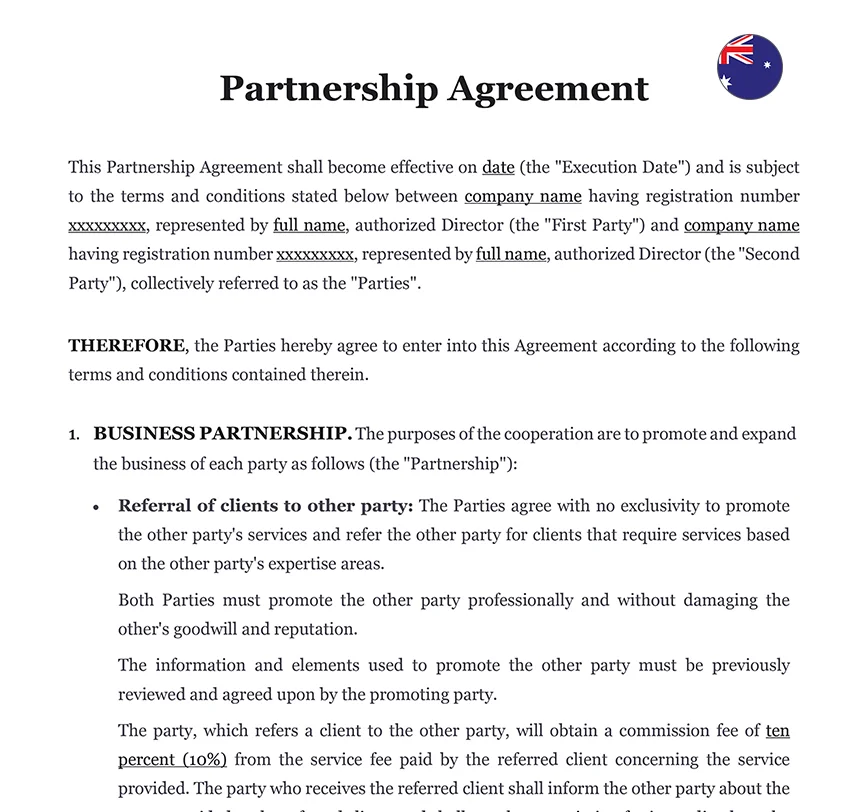What is important when forming a Business Partnership
A Business Partnership Agreement is a fundamental document that outlines the terms, responsibilities, and expectations of all parties involved in a business partnership. This guide provides essential steps for forming a business partnership in Australia, ensuring all partners are aligned and protected.
Understanding Partnership Agreements
Partnership agreements define the framework and operation of the business partnership.
1. Definition: A Business Partnership Agreement is a legally binding contract between two or more parties who wish to manage and operate a business together.
2. Types: These agreements can vary based on the type of partnership, such as general partnerships, limited partnerships, and joint ventures.
3. Legal Framework: The enforceability of Business Partnership Agreements in Australia depends on precise drafting and adherence to partnership laws.
Choosing the Right Partner
Selecting the right partner is crucial for a successful business partnership.
1. Shared Vision: Ensure potential partners share the same vision and business goals.
2. Complementary Skills: Choose partners with skills and expertise that complement your own.
3. Financial Stability: Assess the financial stability and commitment of potential partners.
4. Reputation: Consider the reputation and reliability of potential partners in the industry.
For additional insights on selecting partners and collaborators, you might find our article on Legal Aspects for Hiring a Home Decor Specialist in Australia useful.
Defining Roles and Responsibilities
Clearly defining roles and responsibilities helps prevent conflicts and ensures smooth operations.
1. Management Structure: Outline the management structure and decision-making process.
2. Individual Roles: Define the specific roles and responsibilities of each partner.
3. Operational Duties: Detail the day-to-day operational duties of each partner.
4. Authority Levels: Specify the authority levels and limitations of each partner.
Capital Contributions and Profit Sharing
Clearly defining capital contributions and profit-sharing arrangements is essential.
| ➤ Initial Contributions: Specify the initial capital contributions of each partner. |
| ➤ Additional Contributions: Outline procedures for additional capital contributions if needed. |
| ➤ Profit Sharing: Define the profit-sharing ratio among partners. |
| ➤ Loss Sharing: Address how losses will be shared among partners. |











